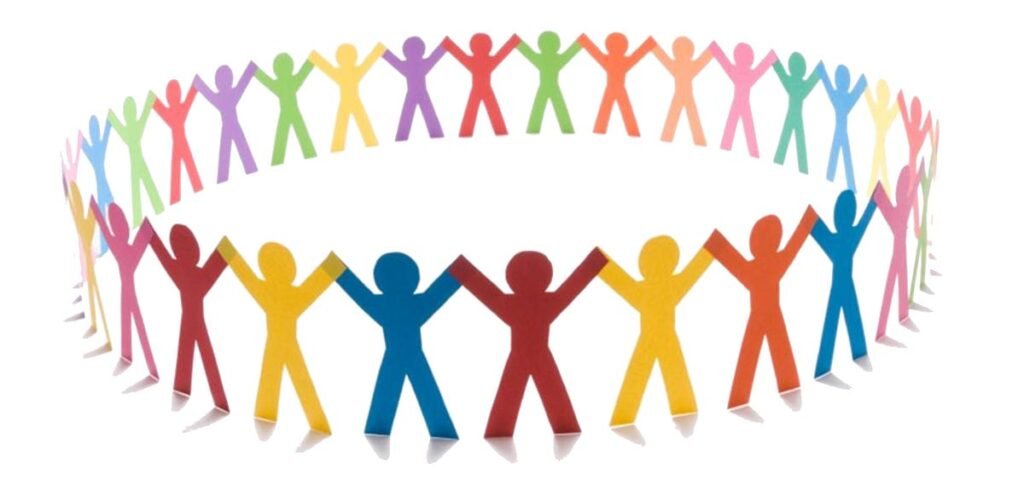In a fast-paced world where technology connects us virtually but often isolates us in real life, the role of community centers in rebuilding social bonds is more important than ever. These centers serve as physical and emotional gathering spaces, helping people reconnect, share resources, and feel a sense of belonging. Whether it’s a senior joining a dance class, a teen finding support through a mentorship program, or families attending a cultural fair, community centers create opportunities for real human connection.
In this article, we’ll explore the different ways community centers rebuild social bonds, the challenges they face, and why investing in them is crucial for the health of our communities.
Why Social Bonds Are Breaking
Before we dive into solutions, it’s important to understand the problem. Social bonds—the connections that tie individuals to one another—are weakening. Some of the major reasons include:
- Urbanization and migration: People move frequently for jobs or education, leaving behind familiar networks.
- Digital communication replacing in-person interaction: While convenient, it often lacks depth and emotional fulfillment.
- Busy lifestyles: Work, school, and other responsibilities leave little time for socializing.
- Economic inequality: When people struggle to meet basic needs, community involvement becomes a luxury.
- Generational gaps: Younger and older generations often find themselves disconnected due to differing values, interests, and technology use.
This breakdown leads to isolation, anxiety, and mistrust within communities. That’s where community centers come in.
What Are Community Centers?
Community centers are public places that bring people together to engage in a variety of activities. These can include:
- Educational programs
- Health and wellness classes
- Arts and cultural events
- Recreational activities
- Social services and support groups
- Job training and career services
They are usually funded by local governments, non-profits, or community organizations, and are open to people of all ages and backgrounds.
The Role of Community Centers in Rebuilding Social Bonds
1. Creating Safe, Welcoming Spaces
At the heart of every community center is a simple mission: to provide a space where people feel safe, accepted, and valued. These centers become safe havens, especially for vulnerable populations like children, the elderly, and immigrants.
For example, a community center offering ESL (English as a Second Language) classes helps immigrants not only learn the language but also meet others going through the same transition.
2. Encouraging Intergenerational Interaction
One of the most impactful roles of community centers is bringing together people from different age groups. A senior citizen teaching a young adult how to bake, or a teen helping an older person learn to use a smartphone—these are moments that break down age-related stereotypes and foster mutual respect.
Intergenerational programs are especially valuable in rebuilding social bonds, as they strengthen the fabric of society.
3. Fostering Local Identity and Pride
Many community centers celebrate local culture through festivals, food fairs, history talks, and art exhibits. These events highlight the richness of a community’s heritage and encourage pride in one’s roots.
When people feel proud of where they come from, they’re more likely to care for their neighbors and the environment around them.
4. Providing Access to Mental Health and Emotional Support
Loneliness is a growing public health crisis. Community centers often offer group therapy, meditation sessions, or informal support groups. These services make a significant difference, especially for people who may not otherwise have access to mental health care.
By creating an environment where people feel heard and supported, the role of community centers becomes critical in healing emotional wounds and building trust.
5. Promoting Volunteerism and Social Responsibility
Many centers operate with the help of volunteers. This encourages civic participation and gives people a chance to contribute meaningfully to their community.
Volunteering not only helps others but also gives the volunteer a sense of purpose—boosting their mental well-being and helping form lasting relationships.

Real-Life Examples of Impact
Let’s look at a few examples of how community centers are helping rebuild social bonds:
- The Bronx River Alliance in New York involves local youth in cleaning and maintaining parks, turning them into caretakers of their neighborhoods.
- The India Habitat Centre in Delhi hosts everything from art workshops to policy discussions, making it a hub for both creativity and civic engagement.
- The Brixton Community Centre in London offers cultural festivals, skill-building programs, and family movie nights, all in one space.
Each of these centers serves as a reminder of the power of shared space and shared purpose.
Challenges Faced by Community Centers
Despite their value, community centers face several challenges:
- Funding issues: Many rely on government grants or donations, which can be inconsistent.
- Space limitations: As cities grow, finding large, accessible venues becomes harder.
- Awareness and engagement: Not everyone knows about their local community center or the resources it offers.
- Digital divide: While some centers are embracing technology, others lag behind, limiting their reach.
To ensure their continued success, it’s important for both public and private sectors to invest in these community assets.
How Community Centers Can Evolve for the Future
To remain relevant and impactful, community centers need to adapt. Here are a few ways they can do so:
1. Hybrid Programming
Offering a mix of in-person and online classes can help reach more people, including those with mobility issues or busy schedules.
2. Mobile Community Centers
Some places are experimenting with “pop-up” centers—vans or tents that offer health screenings, legal advice, or educational sessions in underserved neighborhoods.
3. Partnerships with Local Businesses
Businesses can sponsor events, donate resources, or provide volunteers. This not only supports the center but also builds goodwill in the local economy.
4. Youth Leadership Programs
By empowering young people to plan and run programs, centers ensure the next generation is engaged and invested in community well-being.
The Economic Benefits of Stronger Social Bonds
Rebuilding social bonds isn’t just a feel-good goal—it has real economic benefits:
- Healthier populations: Reduced loneliness and stress mean lower healthcare costs.
- Lower crime rates: Stronger communities are more watchful and cooperative.
- Better schools: Engaged parents and mentors contribute to better educational outcomes.
- Stronger local economies: When people trust and support each other, they also support local businesses.
Community centers play a foundational role in generating these positive outcomes.
Final Thoughts
In a world where people are growing more distant physically, emotionally, and culturally the role of community centers in rebuilding social bonds is nothing short of essential. They are more than just buildings; they are the beating hearts of neighborhoods. They help us feel less alone, more capable, and deeply connected to those around us.
Governments, organizations, and individuals must recognize their value and work to ensure every community has access to such a space. Because at the end of the day, rebuilding social bonds begins with simply coming together.
Read Next – The U.S. Gender Equality Movement in Work and Society





